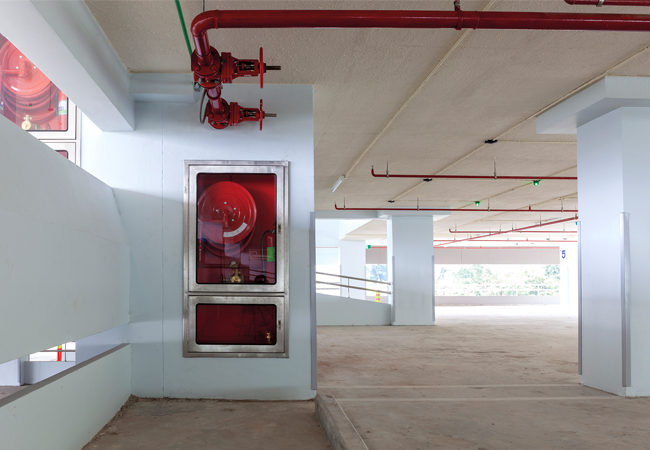
Credit: istock coldsnowstorm
The Building Regulations 2010 have undergone significant amendments to various procedures relating to notices about work that is to be done and about reporting on work that has been done, in particular requirements to confirm that the work is compliant with the relevant regulations.
There are also changes to the procedures that will apply to higher risk building work as the Building Safety Regulator takes responsibility for the Building Control system for HRBs.
Changes to Part 3 of the current Regulations deal with Notices, Plans and Certificates. Regulation 8 of the amendments changes the requirements for submission and approval of full plans and amend requirements for notices of commencement and completion.
The existing Regulation 14, which covers applications for building control approval with full plans has been completely revised to reflect both the information required under the new regime and the introduction of the Regulator as the relevant authority for HRB work.
Regulation 9 of the amendments introduces a new regulation (15A) requiring consultation about plans for buildings other than HRBs that are within the scope of the Fire Safety Order, or will be in scope as a result of the proposed building work.
There are also new Appeals processes and potential grounds set out in relation to refusal to grant certificates or to certain decisions, which will be heard by the First Tier tribunal. The appeals process depends in detail on whether the building control body is the Regulator or the local authority.
Measures are being put in place to ensure that those hearing appeals to the Tribunal will have the necessary knowledge skills and experience of the sector to understand the potential complexities of the cases they are asked to adjudicate.
Part 4 of the Building Regulations is amended to set out the rules governing the activity of the Building Safety Regulator in its role as the supervisor of building works, particularly Higher Risk Buildings.
It includes provisions for notices for work which is not higher risk building work but is being undertaken alongside such works, where the client has appointed the same principal contractor for all the works and the Regulator is the Building Control body for all the works.
Part 5 of the Building Regulations requires self certification schemes to notify their work, in particular where that work is deemed to be higher risk work, and also for the Regulator to notify the local authority in relation to any work undertaken for which it is the Regulator.
Part 6 of the Building Regulations, which deals with Energy Performance and Energy Efficiency Requirements, is also amended. It is worth noting that although this part implements elements of the European Energy Performance of Buildings Directive, first adopted in 2003 and transposed into UK law between 2006 and 2008, these measures were very deliberately implemented through the Building Regulations and not under the umbrella of the European Communities Act.
They are intended to be an ongoing feature of our regulatory landscape, as evidenced by the amendments contained in these regulations, which reflect the new regulator’s sole responsibility for controlling higher-risk building work.
With the introduction of the new regime for higher-risk buildings there is a requirement for information that is currently required to be given to the building control body to be given instead to the Regulator in the case of an HRB. These changes address that requirement.
Changes to this Part include arrangements for notifying the regulator of the detailed analysis of the feasibility of using decentralised, co-generation or district heating systems or heat pumps on the project, and for retaining the detailed analysis of the study.
They also require the regulator to be provided with the detailed CO2 emissions rate calculations. Tucked away in the changes to Regulation 27 is a requirement to notify the Regulator that the building has been built as specified, and if not, why not.
Given the requirements in the Higher Risk Buildings regulations to log all changes and to notify the regulator of more significant ones, described below, this detail could be of interest to the building control team, as it will be possible to cross reference with these wider change control records. This is also true of the requirements to notify the details of the fabric energy efficiency rate calculations, (27A). and target primary energy rate calculations.
These are all procedural changes that reflect the new regime and the role of the new Regulator as the building control body. They do not make major changes to the information that is required, but they do change the requirements relating to who receives the information
Bodies such as CIBSE will be working together with the Construction Leadership Council and Its constituent bodies to provide further industry guidance on these regulations and on how clients, principal designers and contractors and Accountable Persons can meet the new obligations in a safe, reasonable and proportionate manner. It is another step on the road to rebuilding trust in the construction and operation of our higher rise building stock, and another step on the road to building a safer future.
- CIBSE will be setting out the breadth of regulatory changes and new requirements of the building regulations at the one day conference: Building Safety: Meeting the Building regulations and delivering the Golden Thread on 28 September, London. For more information and to book visit CIBSE Golden Thread series.
ABOUT THE AUTHOR
Dr Hywel Davies is a former chair of the Building Regulations Advisory Committee who has worked in the field of regulations and standards for over 35 years. He is chief technical officer of the Chartered Institution of Building Services Engineers and an Honorary Fellow of CIBSE.
Links to new regulations
The new regulations deliver the recommendations of Dame Judith Hackitt in her report Building A Safer Future and cover the technical detail underpinning the new, more stringent regime for the design and construction of higher-risk buildings, wider changes to the Building Regulations for all buildings and the details of the new in-occupation safety regime for higher-risk buildings.
Amendments announced on August 17 2023:
The Building Regulations etc. (Amendment) (England) Regulations 2023
The Building Regulations (Higher-Risk Building Procedures) (England) 2023
The Building (Approved Inspectors etc. And Review of Decisions) (England) Regulations 2023
The Higher-Risk Buildings (Management of Safety Risks etc) (England) Regulations 2023
The Building Safety Act 2022 (Consequential Amendments etc.) Regulations 2023
A summary of all secondary legislation can be found at:
The Building Safety Act: secondary legislation






